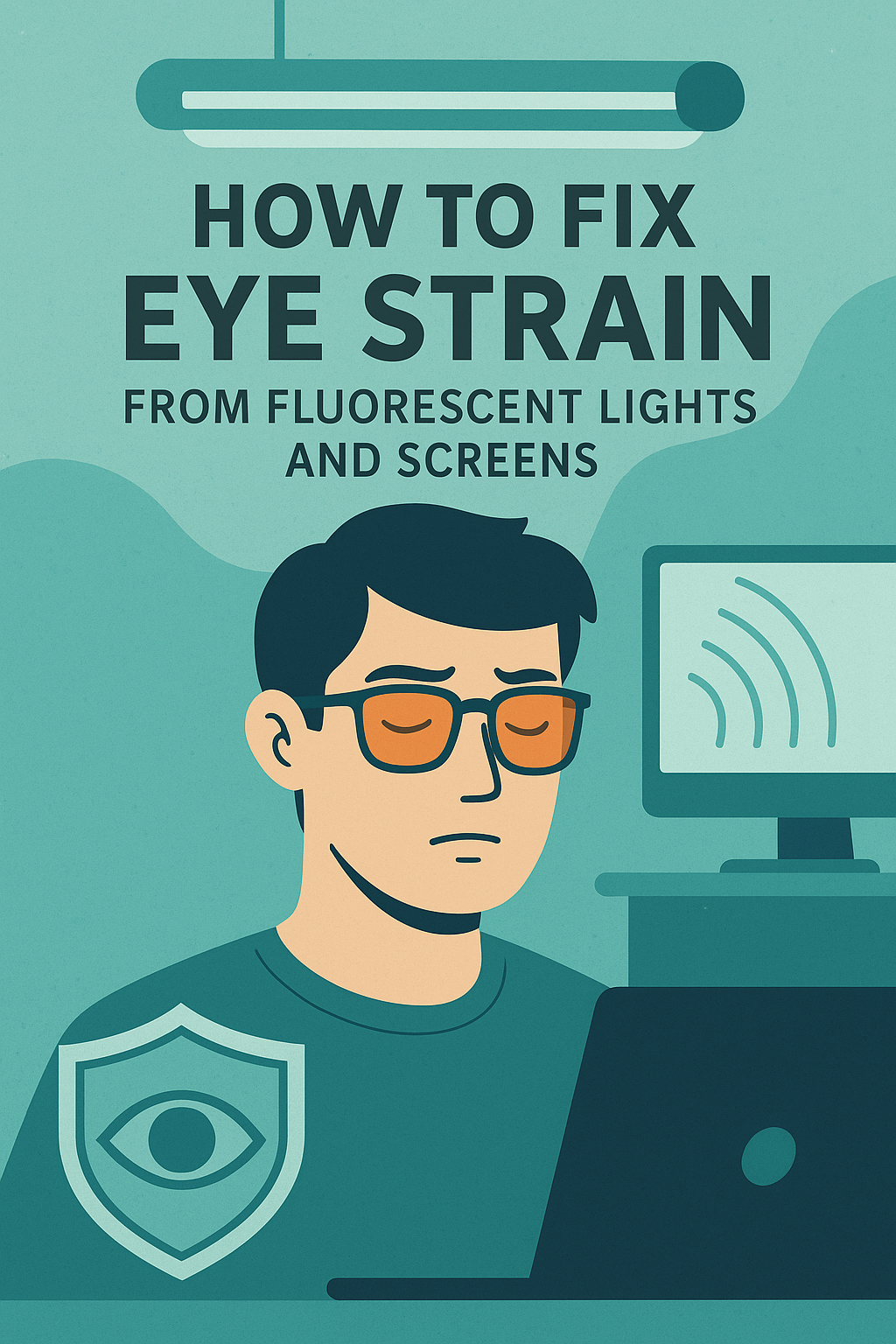
Do Premium Fluorescent Light Covers Really Reduce Eye Strain? Here’s What You Should Know
|
|
Time to read 3 min
|
|
Time to read 3 min
Do your eyes feel tired or gritty by the end of the day? If you work under fluorescent lights and stare at a monitor for hours, that heavy-eyed fatigue isn’t just in your head — it’s your visual system asking for help. As someone who spends long creative hours writing, designing, and researching health content, I’ve learned that protecting your eyes is essential for sustainable energy and focus.
Let’s explore what’s actually causing that strain, and how to fix it with simple, science-backed strategies — from adjusting your lighting to using blue-light filters and wellness-focused glasses that work.
Fluorescent lights might look harmless, but they flicker at imperceptible rates that subtly tire your eyes. They also emit a cool, blue-heavy light spectrum — the same high-energy wavelengths that screens produce — which keeps your eyes and nervous system on high alert all day.
Combine that with reflections, glare, and constant focus shifts from your monitor, and your eye muscles end up overworked. The result? Blurry vision, headaches, dry eyes, and that end-of-day exhaustion that feels deeper than it should.
There’s no single “magic fix.” Instead, think of it as layering small habits and tools that, together, make your environment truly eye-friendly.
The biggest relief often comes from fixing the light around you. If possible, replace or diffuse harsh overhead bulbs. Warm LED lamps (2700–3500 K) mimic natural light better and reduce the sharp contrast your eyes fight all day.
Even something as simple as placing a soft white desk lamp near your monitor can balance your lighting and ease focus. If you can’t replace the fluorescents, try adding fluorescent light filters that soften glare and flicker — a small investment that can make a huge difference in comfort.
Your BenQ monitor likely has a “Low Blue Light” or “Reading” mode — enable it. These modes shift your screen to warmer tones that are easier on your retinas. If you want even more control, use software like f.lux or Windows Night Light to automatically warm your display as the day winds down.
For physical screen protection, I recommend an external filter like the Ocushield Anti-Blue Light Screen Protector — a medical-grade option that reduces blue wavelengths without adding that weird orange tint. It’s especially useful if your workspace lighting can’t be changed.
Even with a good monitor setup, eyewear adds another layer of defense that moves with you. The science is mixed, but countless users (myself included) notice less eye fatigue and fewer headaches with the right pair.
If you want an all-day clear-lens option, the GUNNAR Intercept Glasses are a trusted choice among digital creators. They block a meaningful portion of the 400–450 nm spectrum — the most straining blue light — while keeping colors true to life.
For stronger nighttime protection, you can go with TrueDark Twilight Red-Lens Glasses. These block nearly all blue and green light, helping your circadian rhythm wind down while protecting your eyes from after-hours screen glare.
Not sure which style you’ll like? Start simple with affordable pairs like the Cyxus Blue Light Blocking Glasses — clear, comfortable, and surprisingly effective.
No amount of filters or glasses can save your eyes if your habits don’t change. Here are the basics:
Sometimes persistent strain means something deeper — like dry-eye syndrome, astigmatism, or an outdated prescription. An optometrist can check for these and even add anti-reflective or blue-light coatings to your lenses if needed.
If your job or hobbies demand long screen hours, schedule a yearly exam. Eye strain relief isn’t just about comfort — it’s about protecting long-term focus, clarity, and creativity.
Eye strain doesn’t have to be the price of productivity. By layering small, smart habits — adjusting lighting, using filters, wearing quality blue-light glasses, and taking mindful breaks — you can work longer, feel better, and preserve the clarity your creative mind depends on.
Want to experiment? Start by adding a monitor filter or trying blue-light glasses for a week. You might be surprised how much lighter your eyes feel by Friday.
Stay well, stay focused — and protect your vision as fiercely as your ideas.